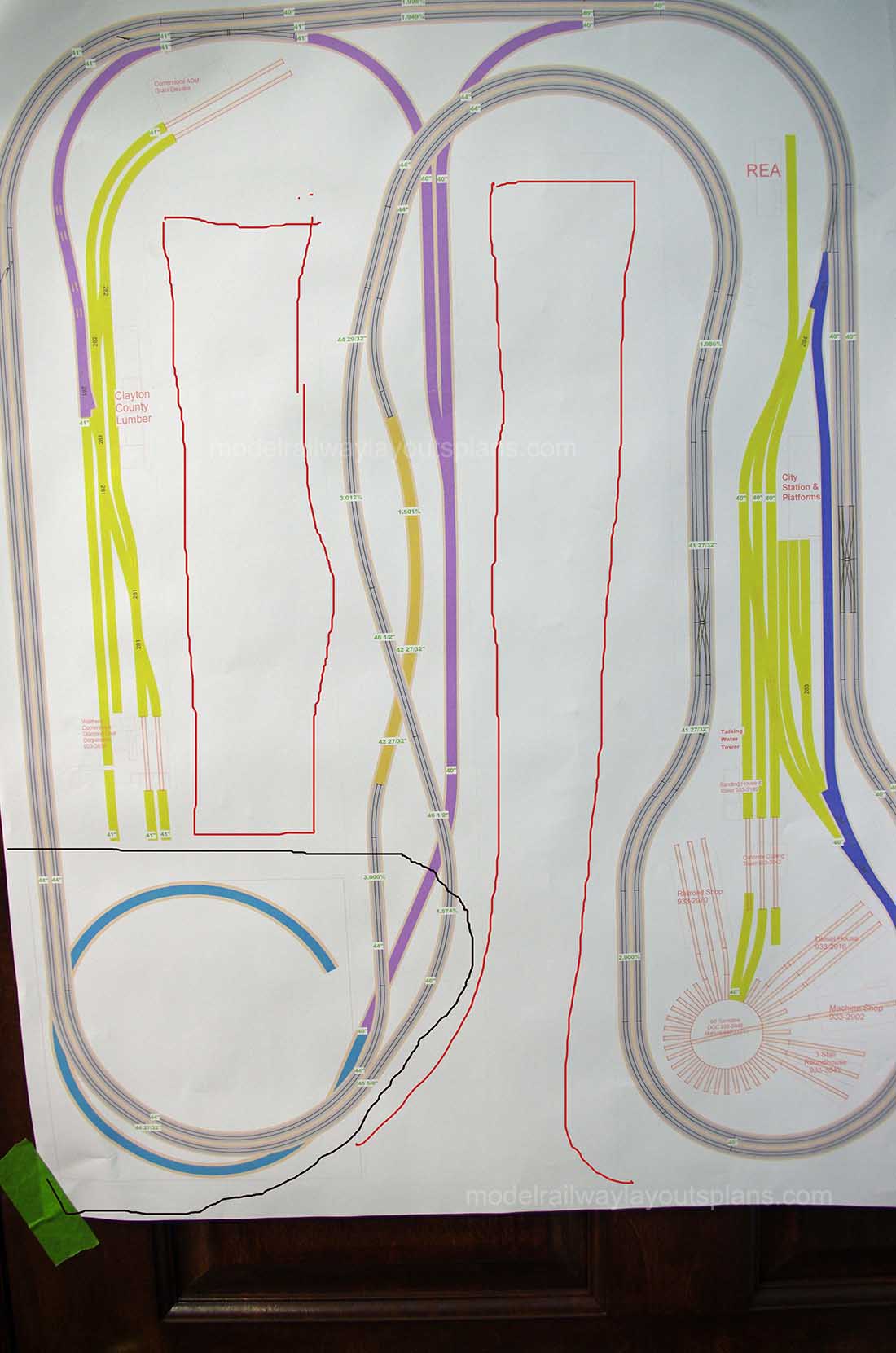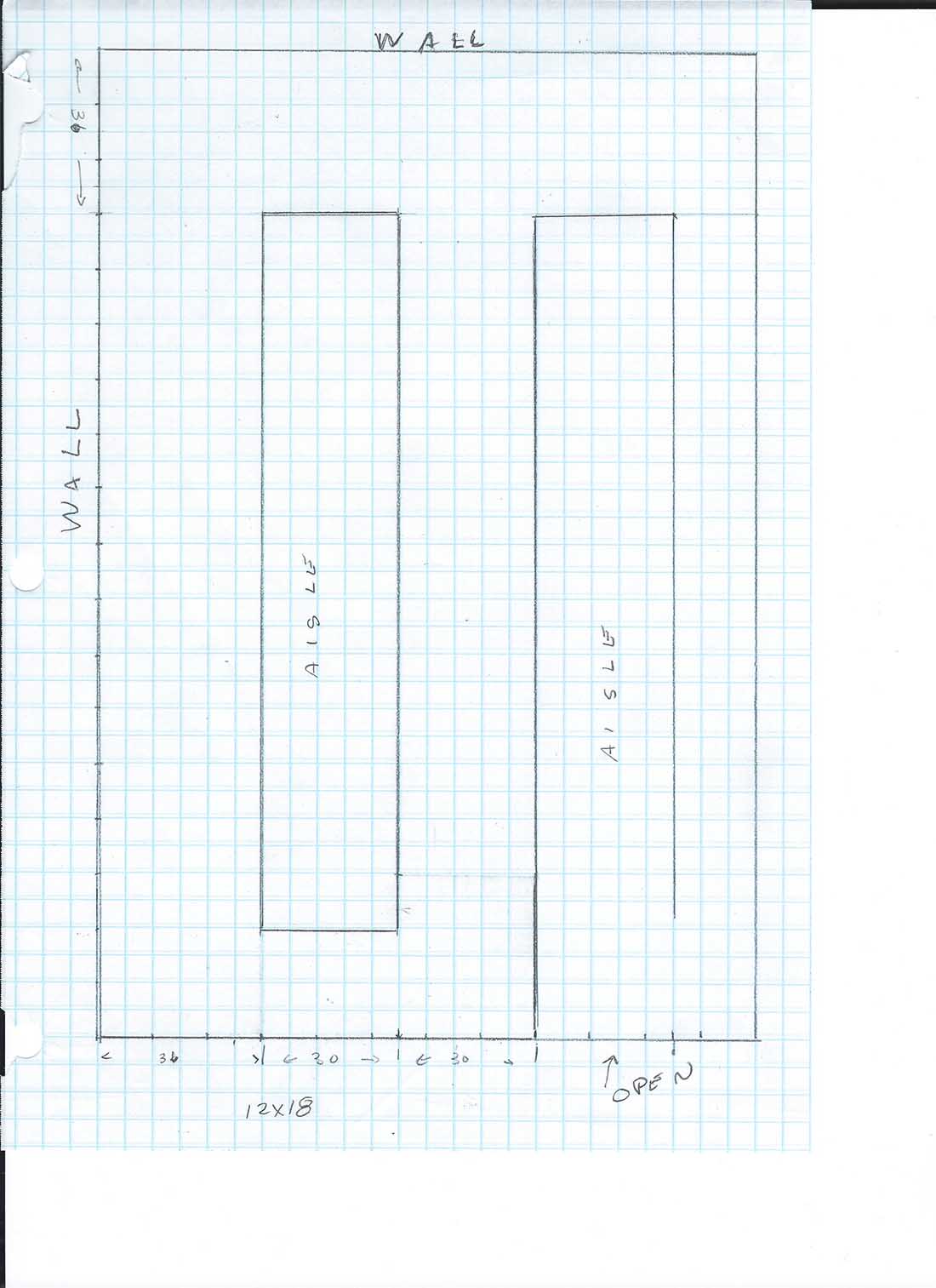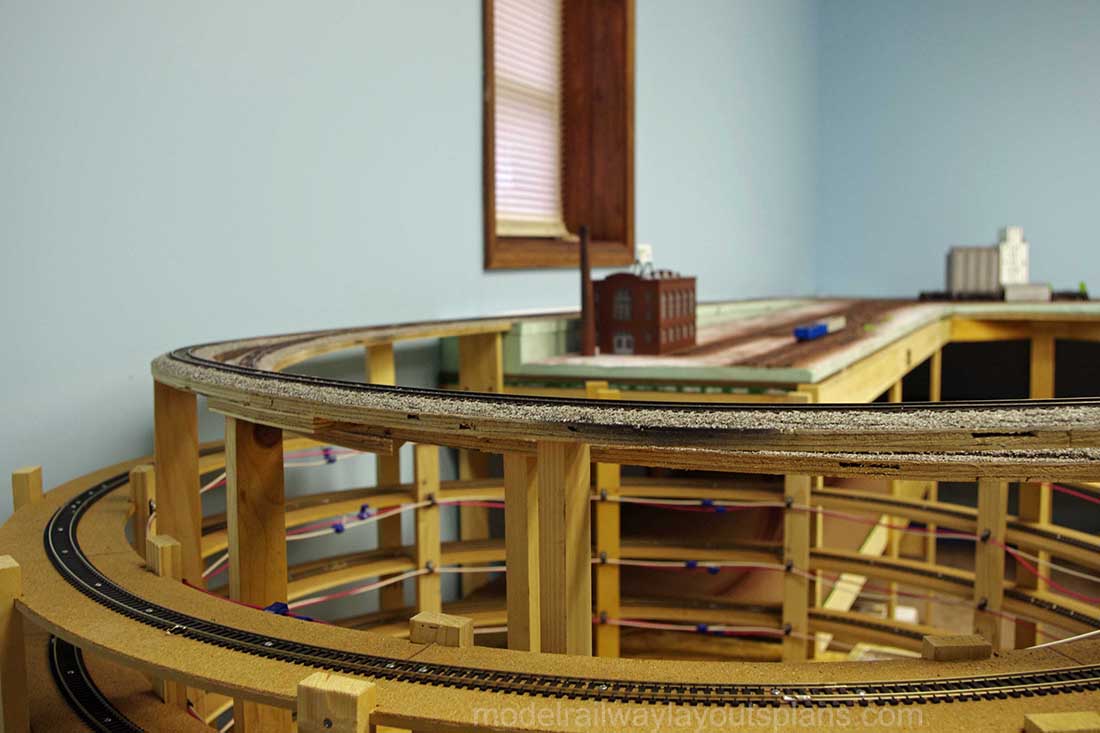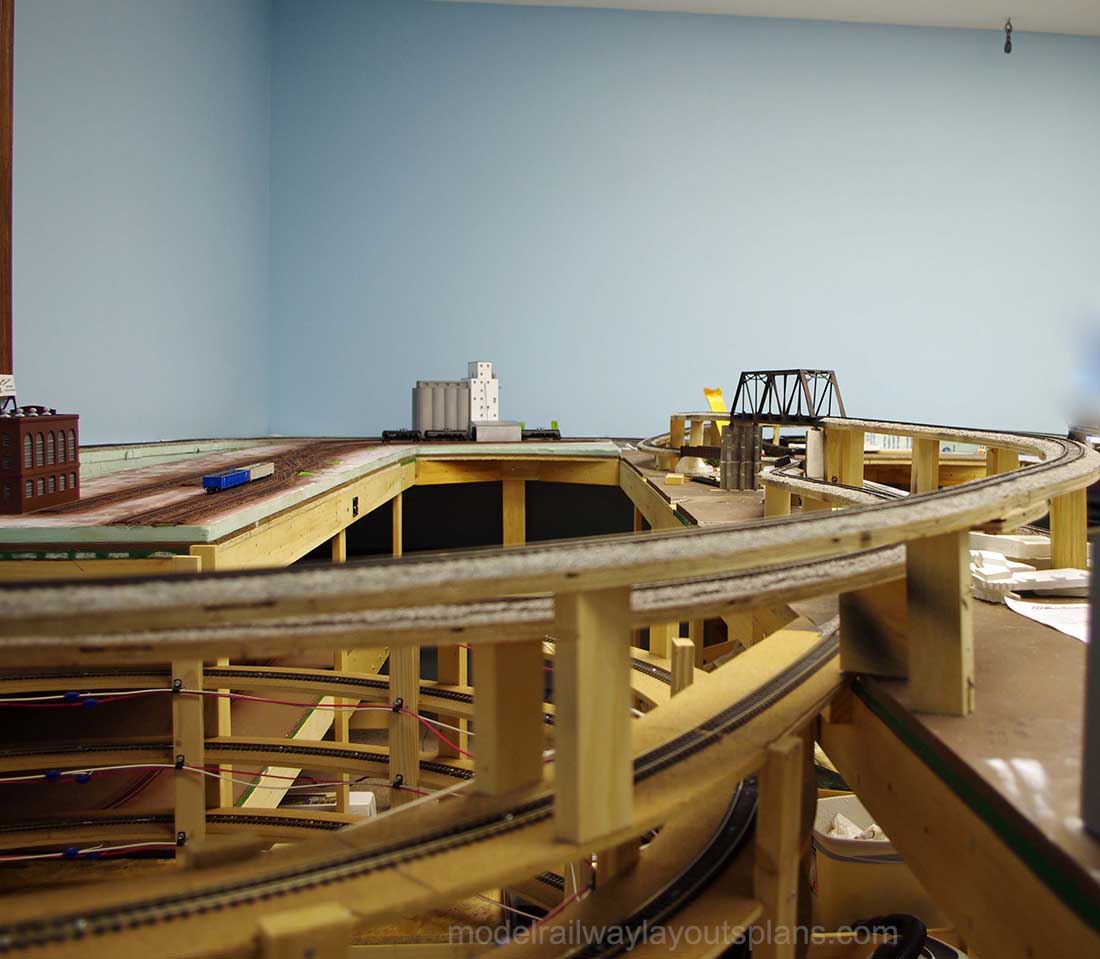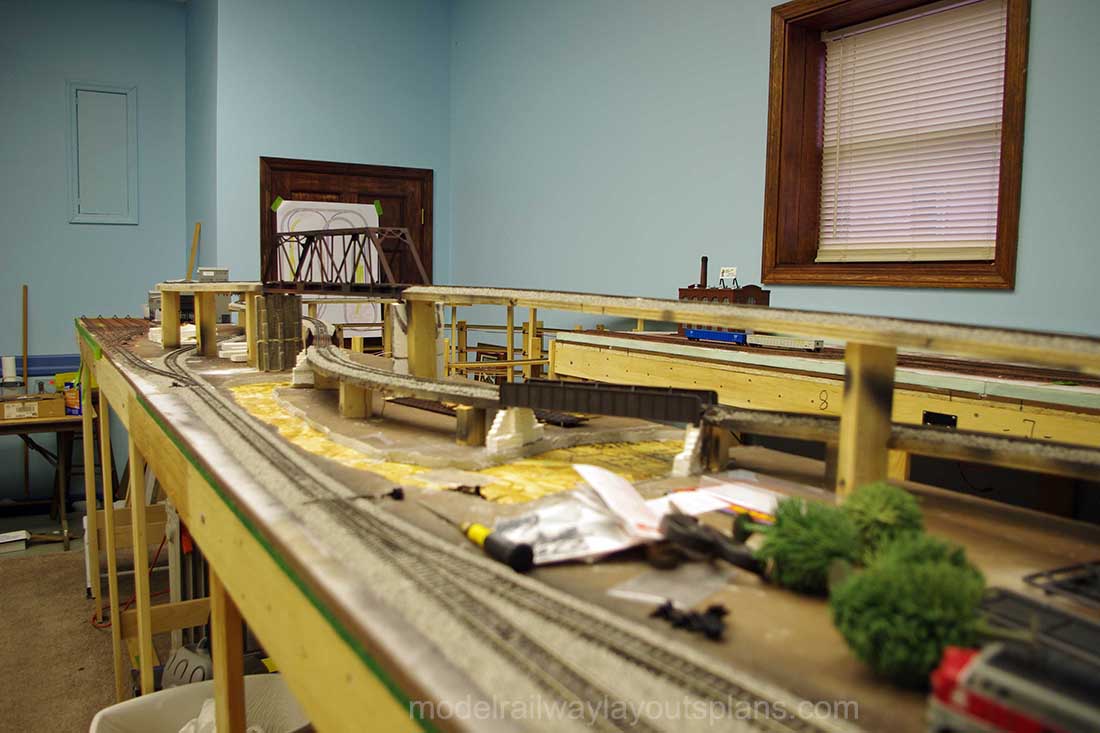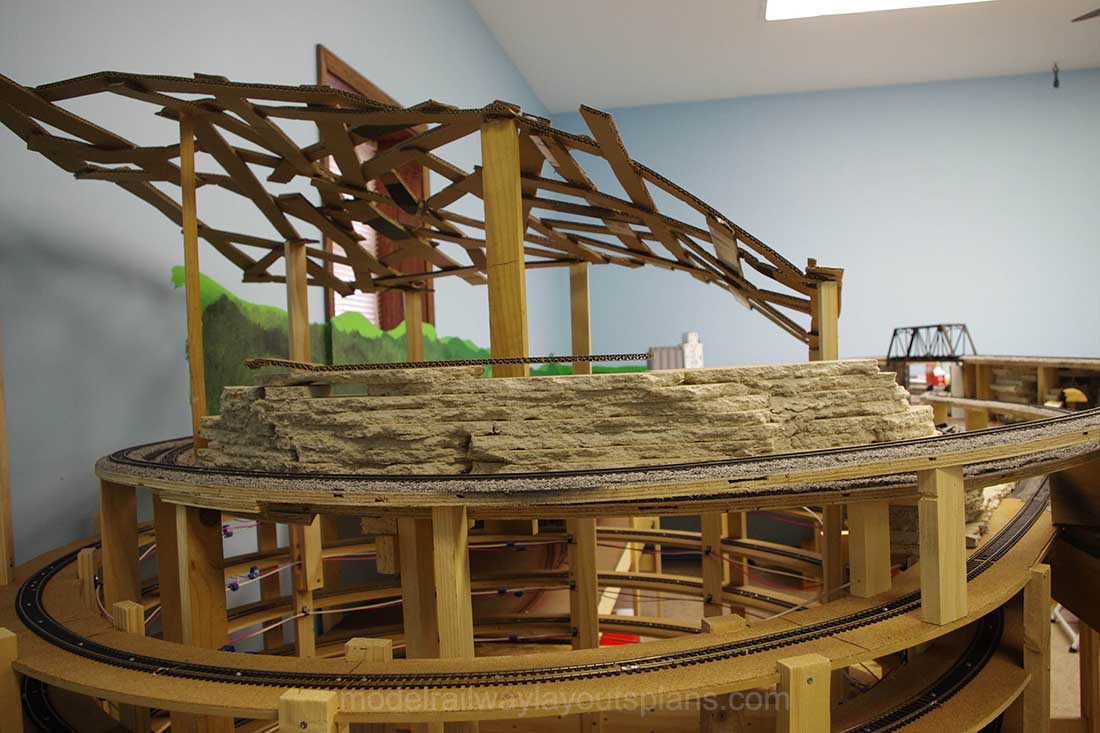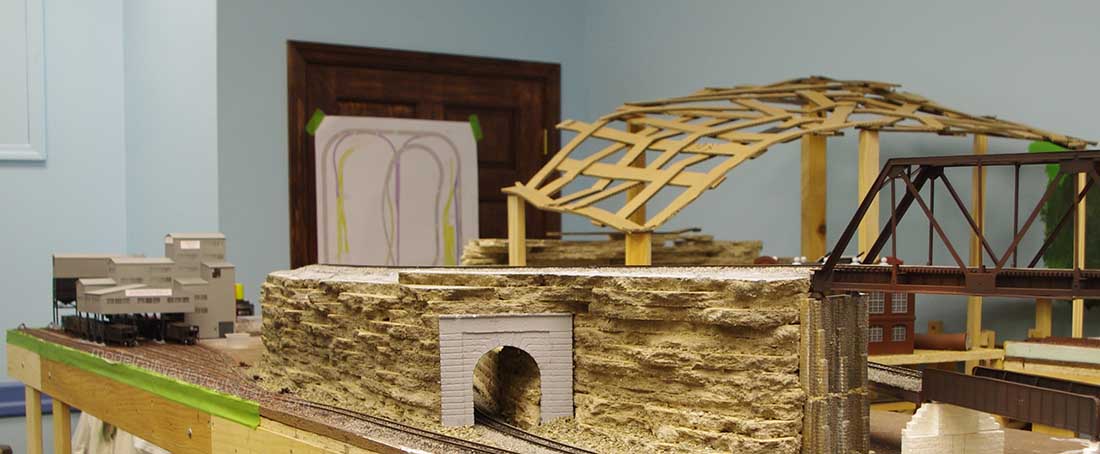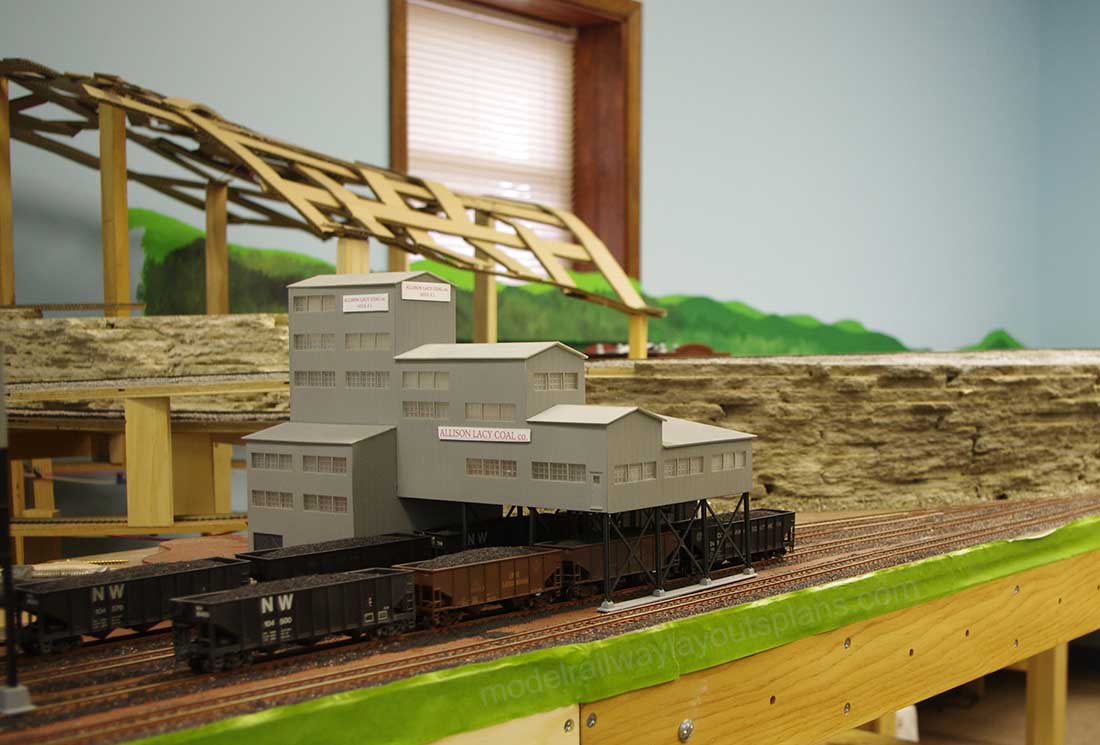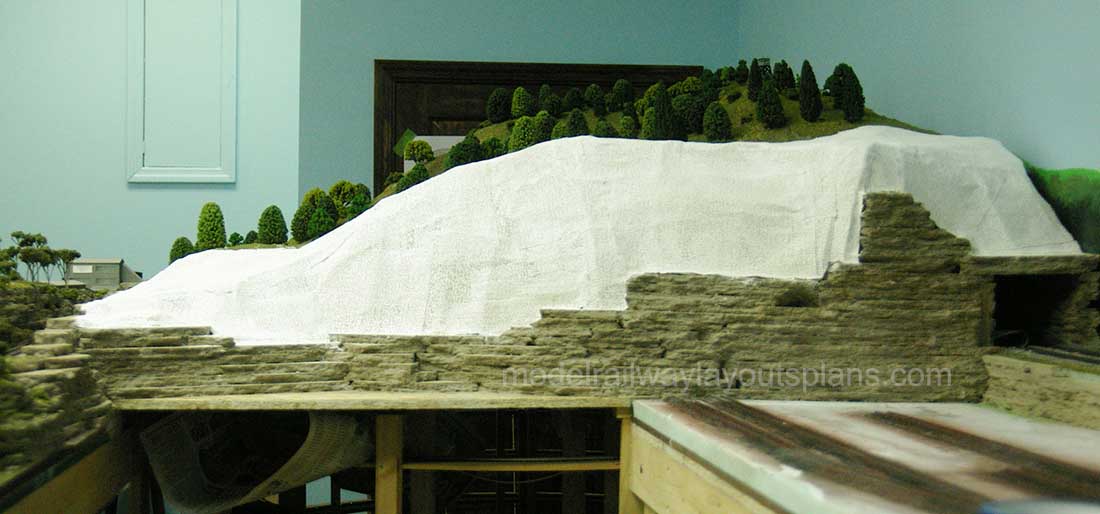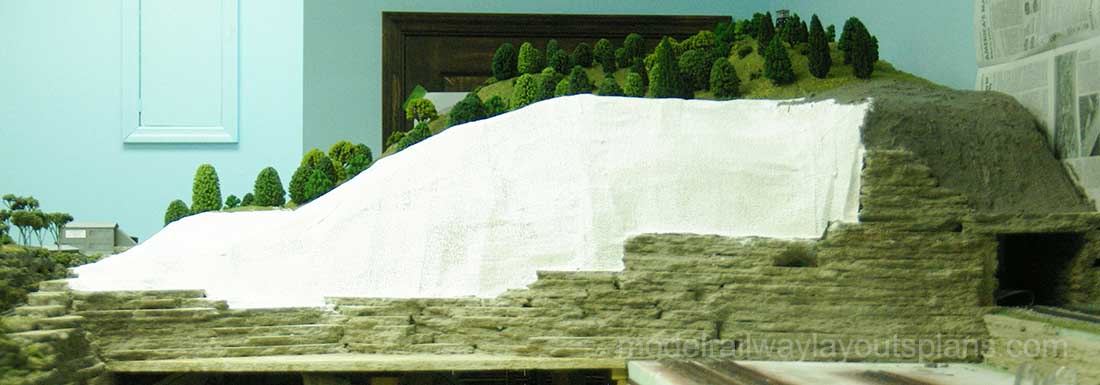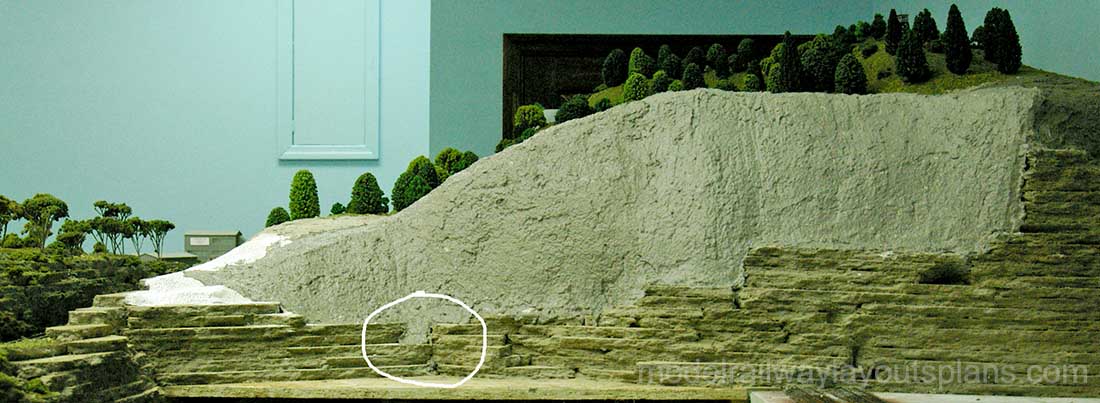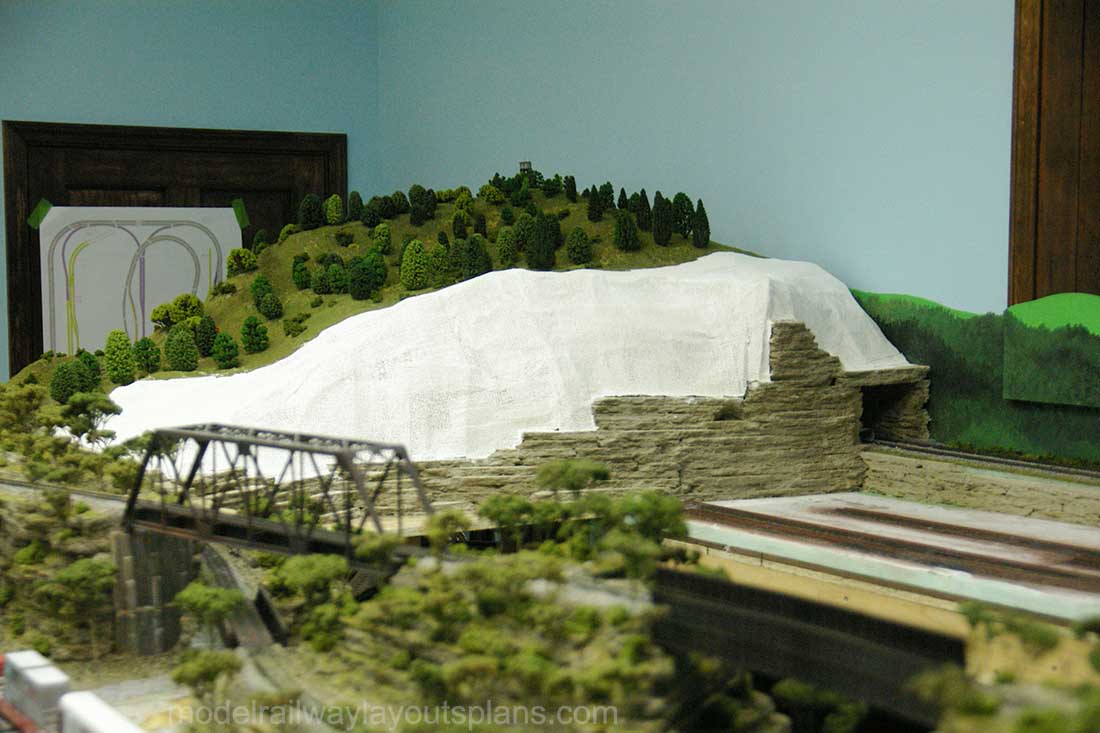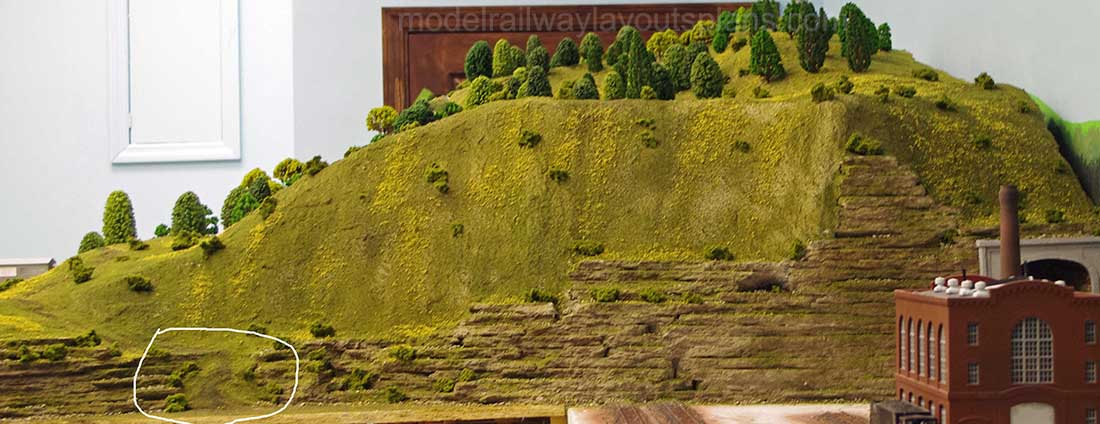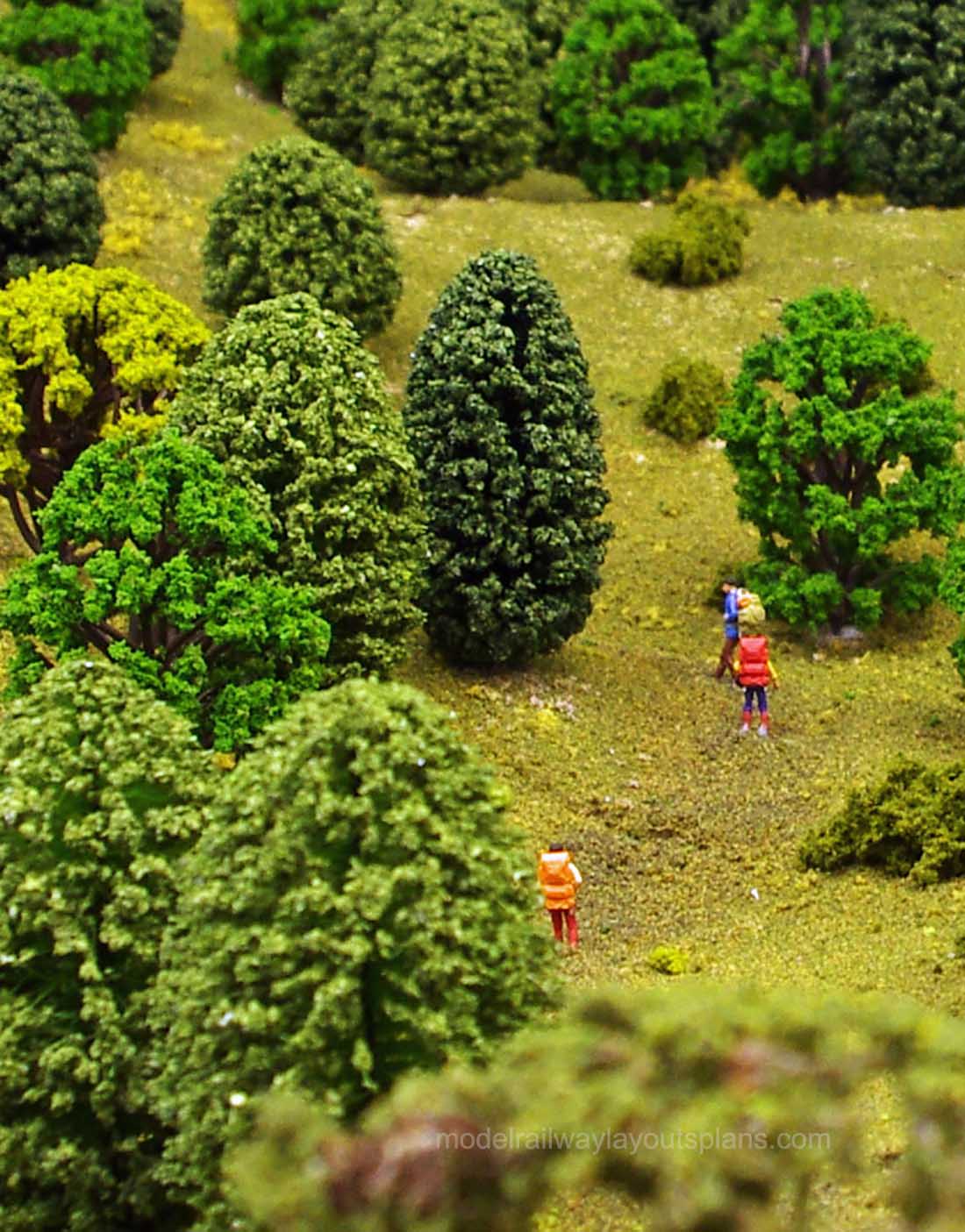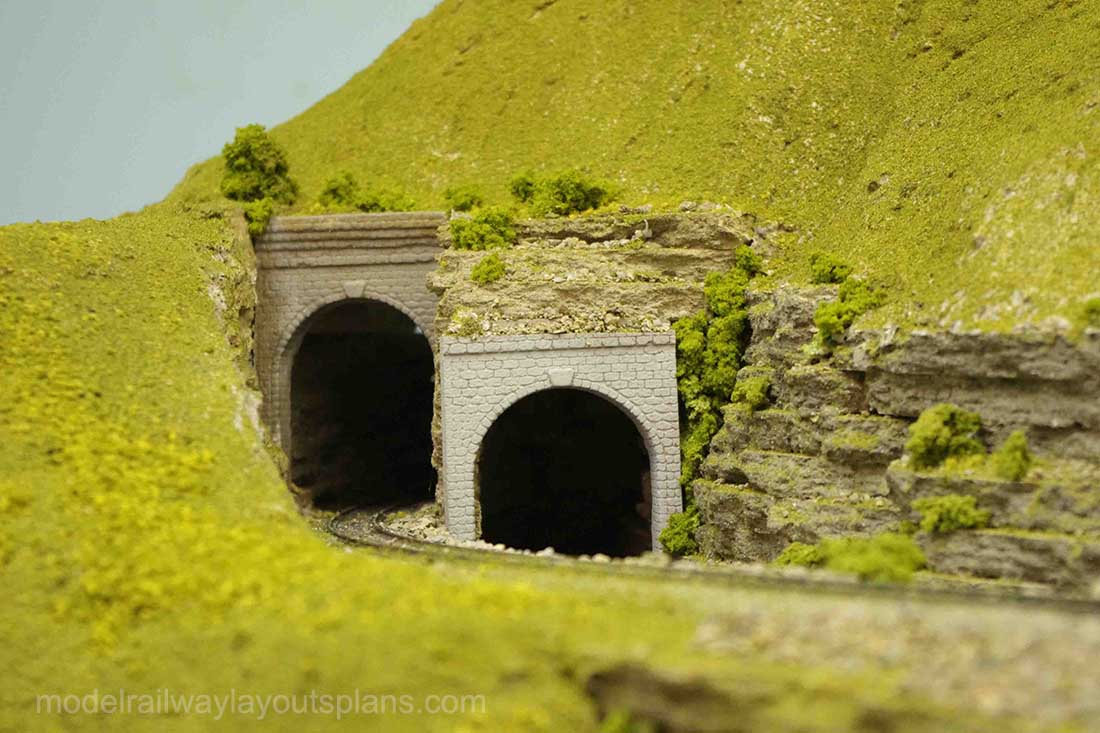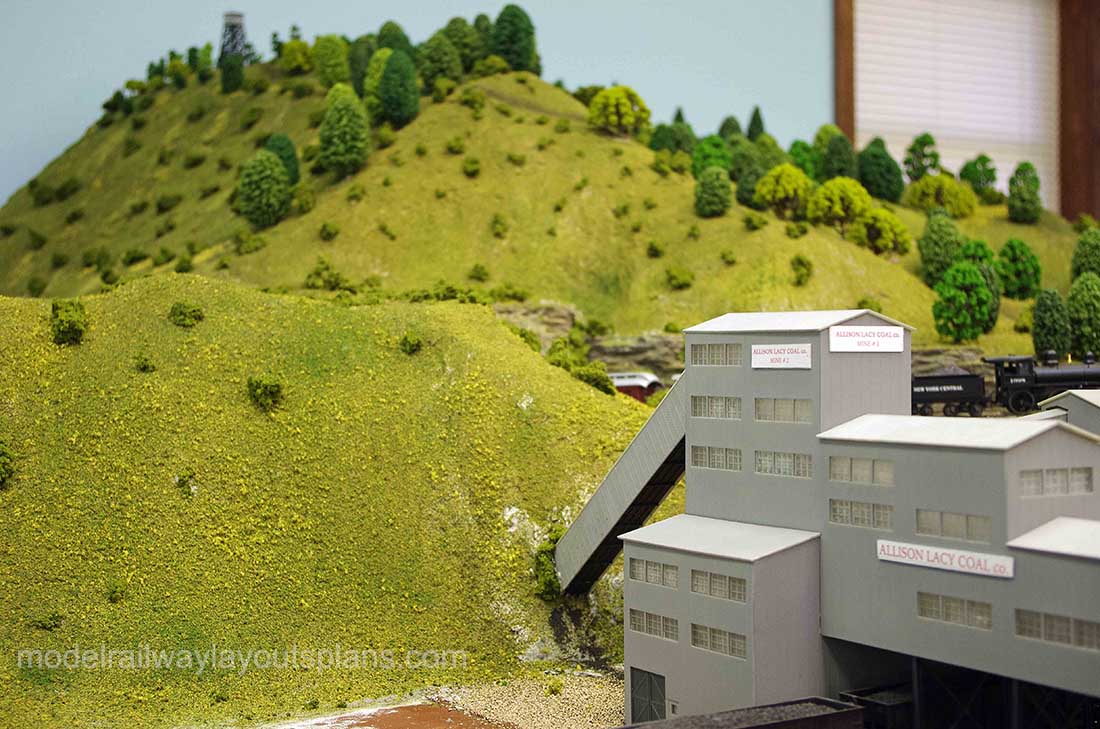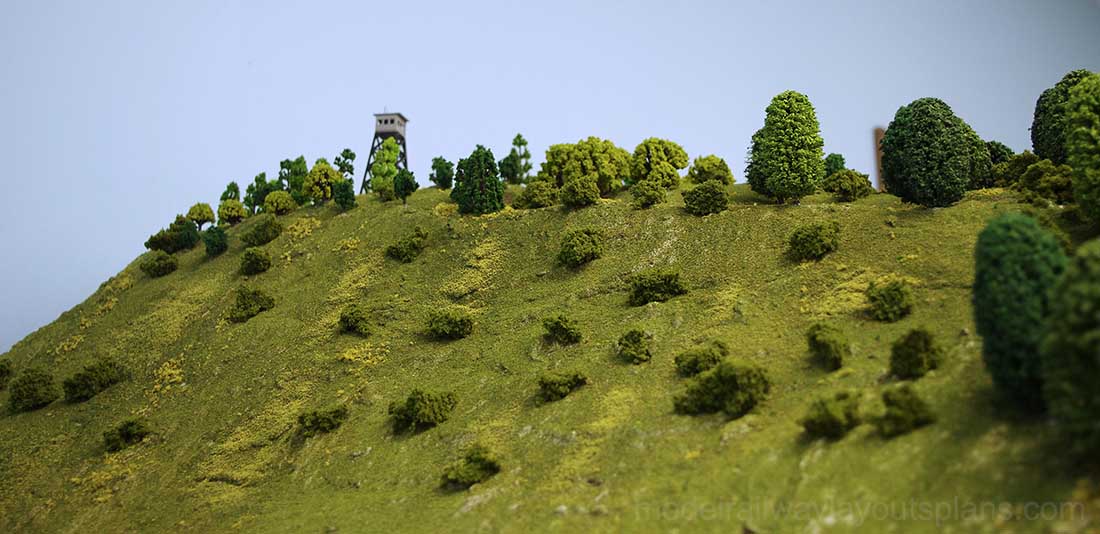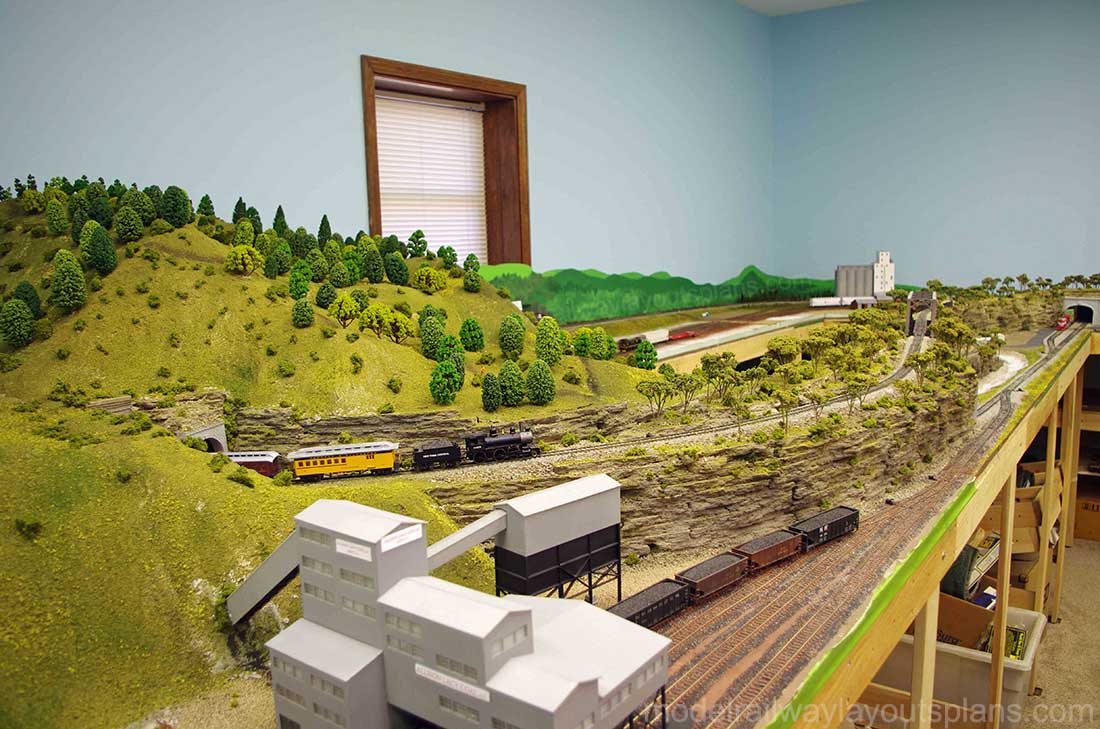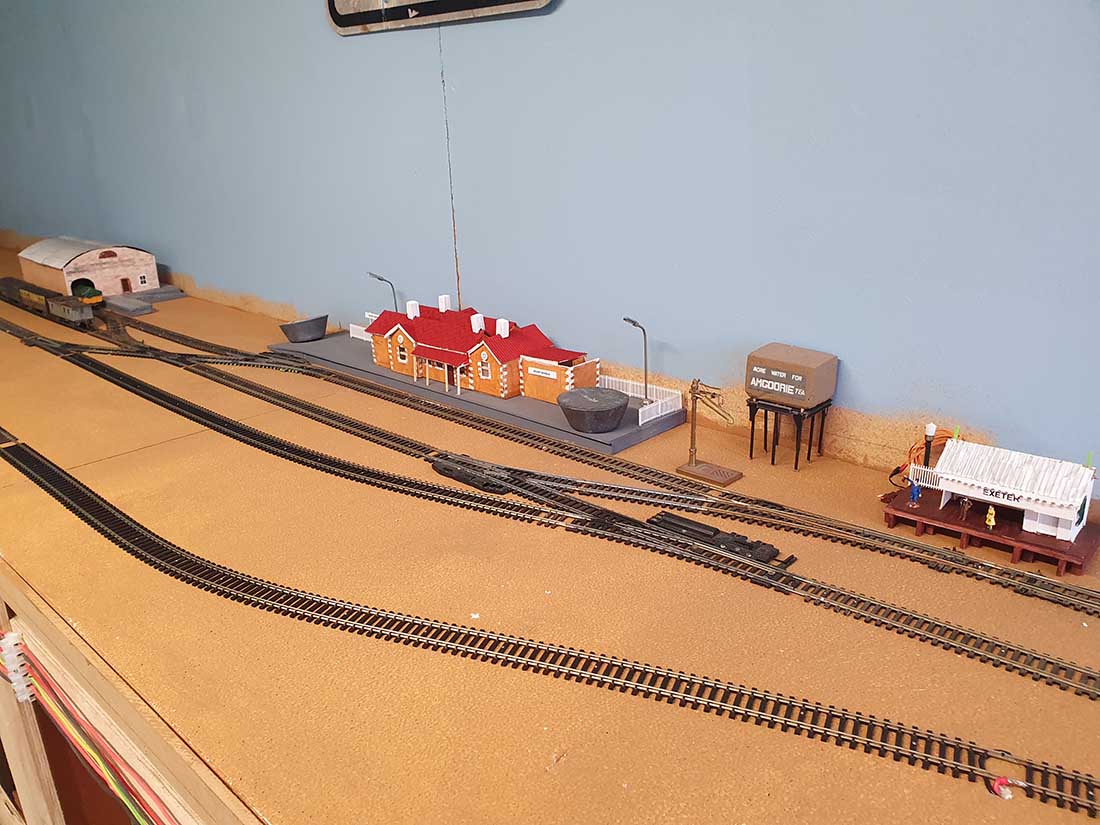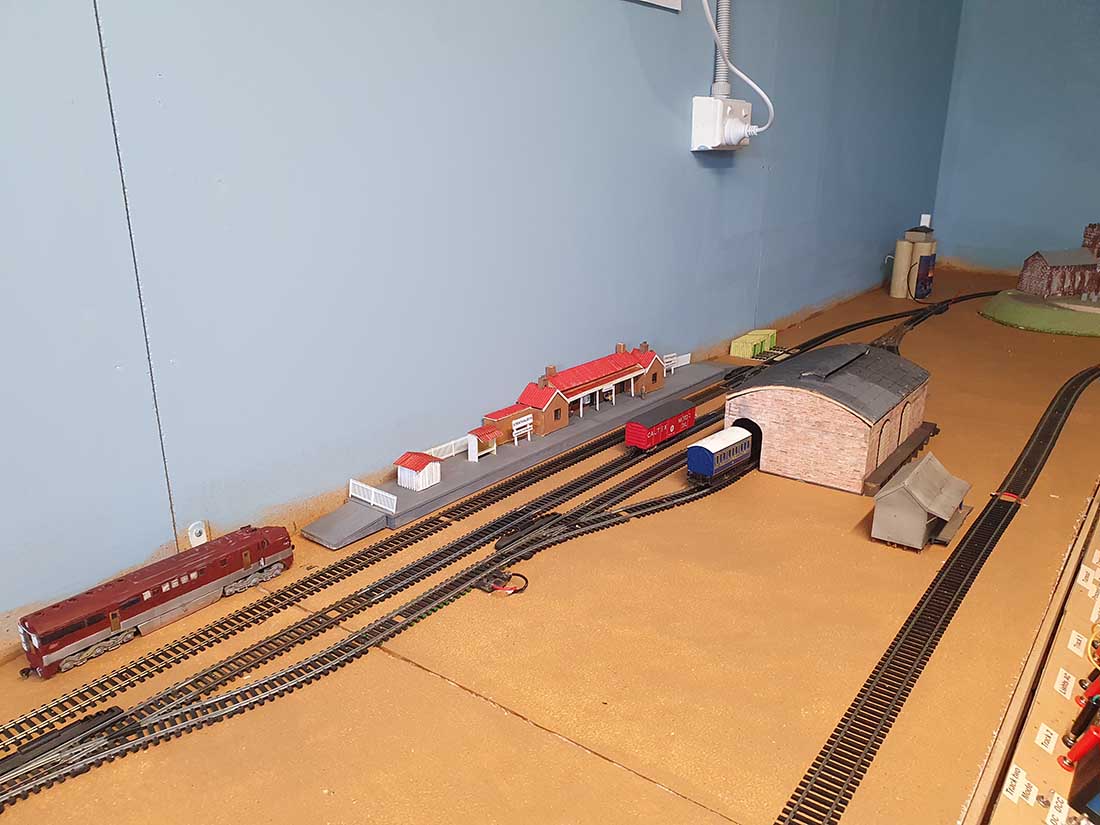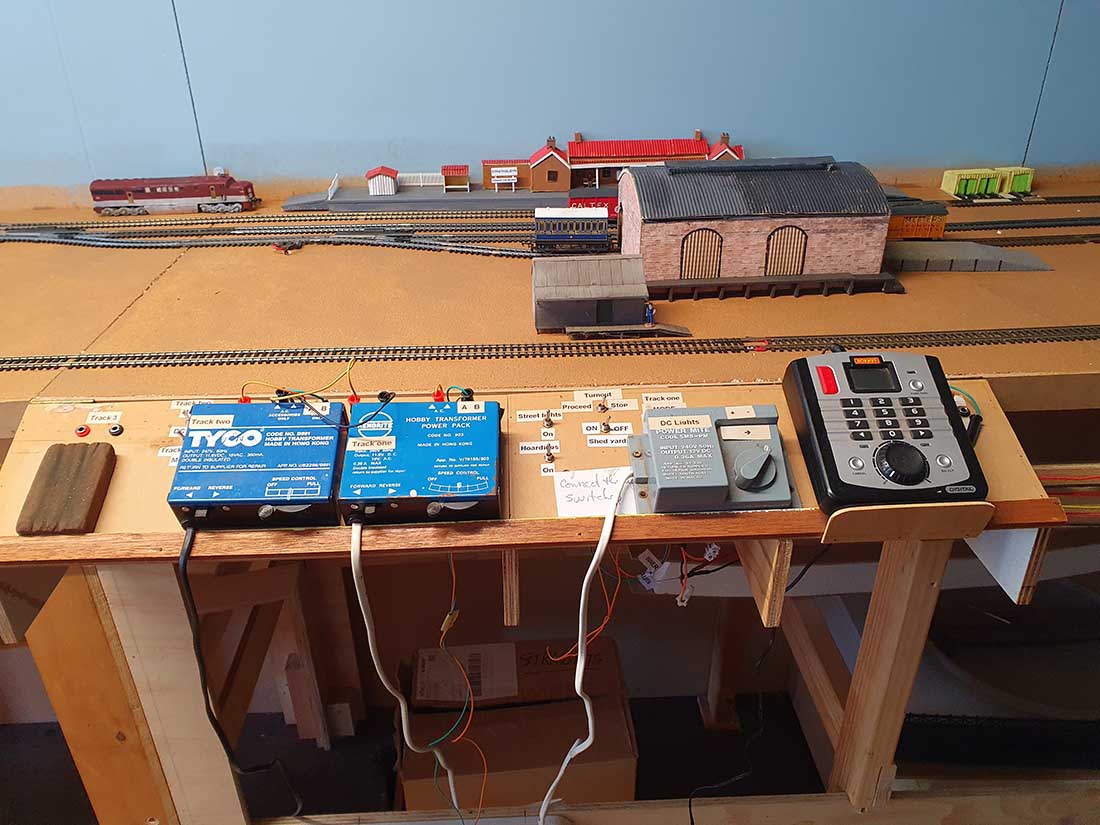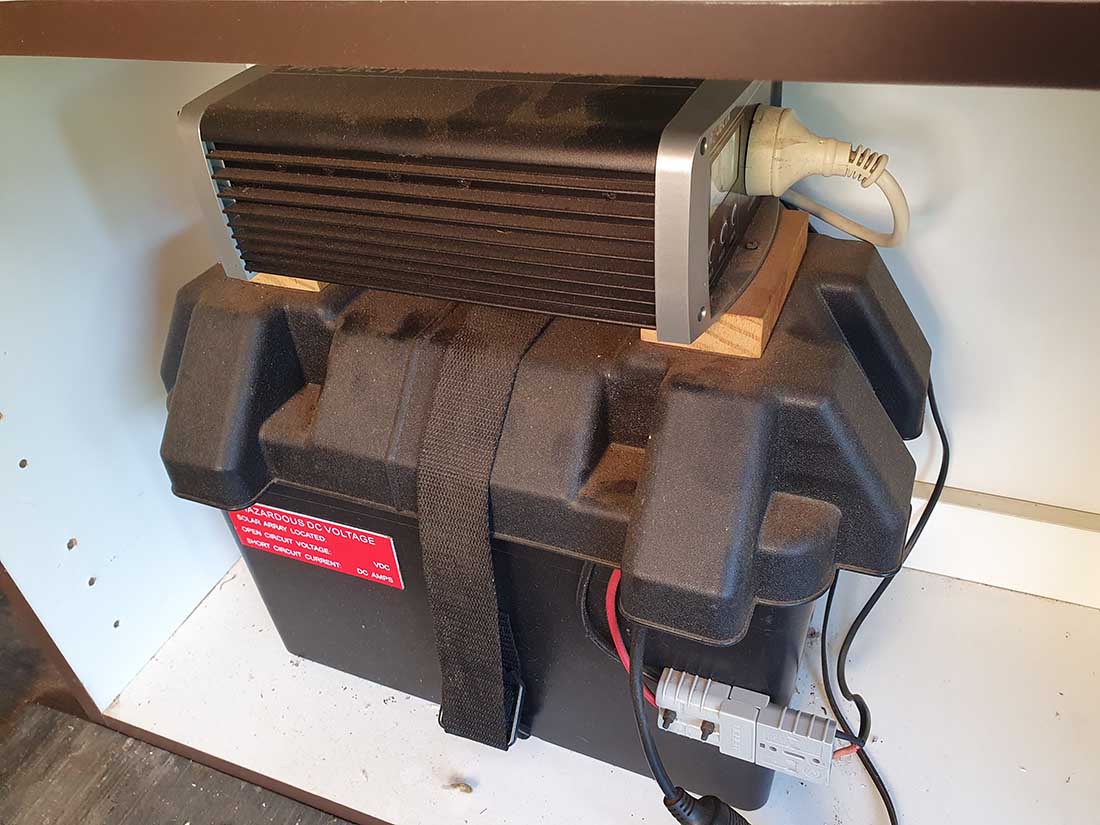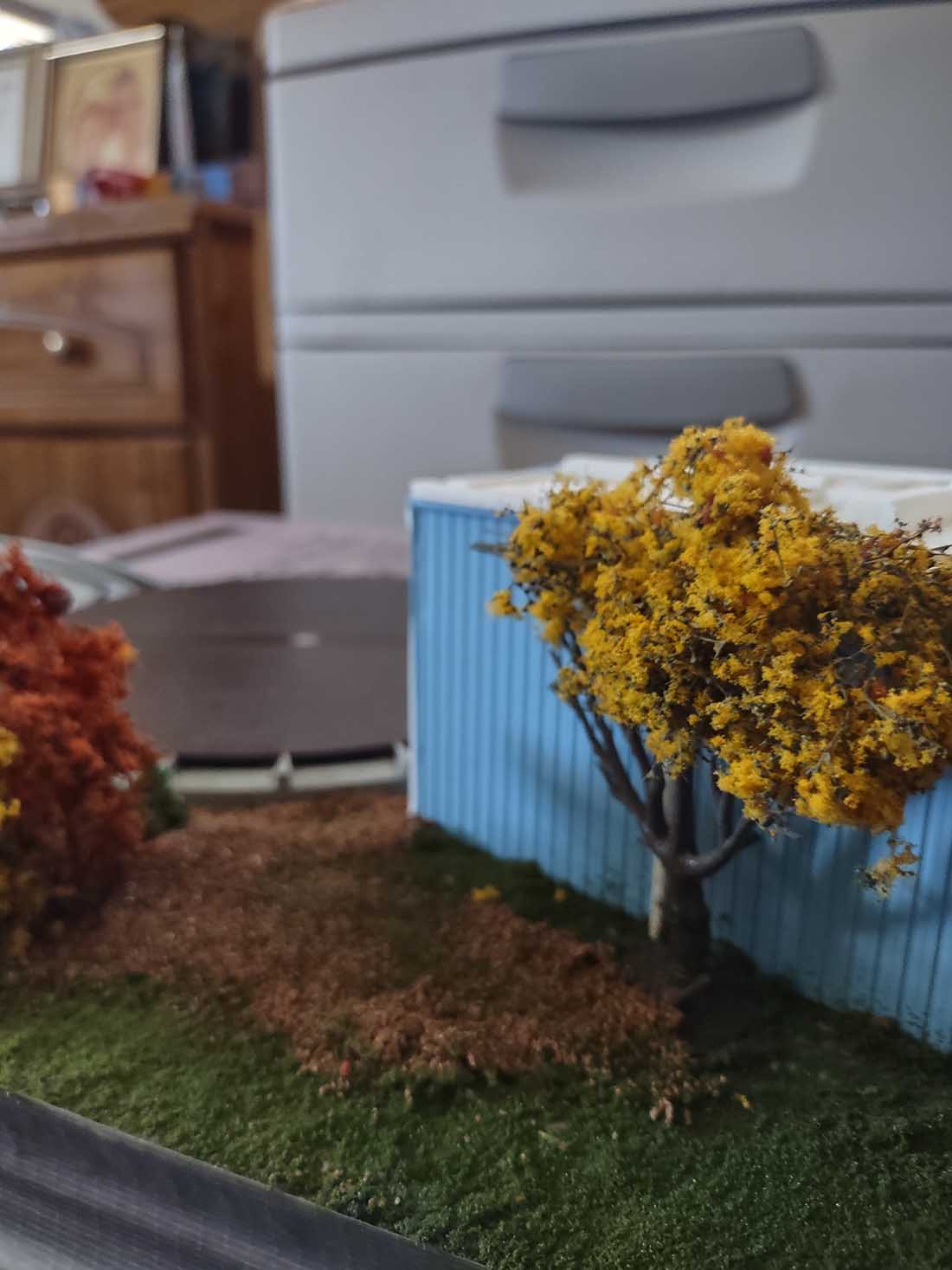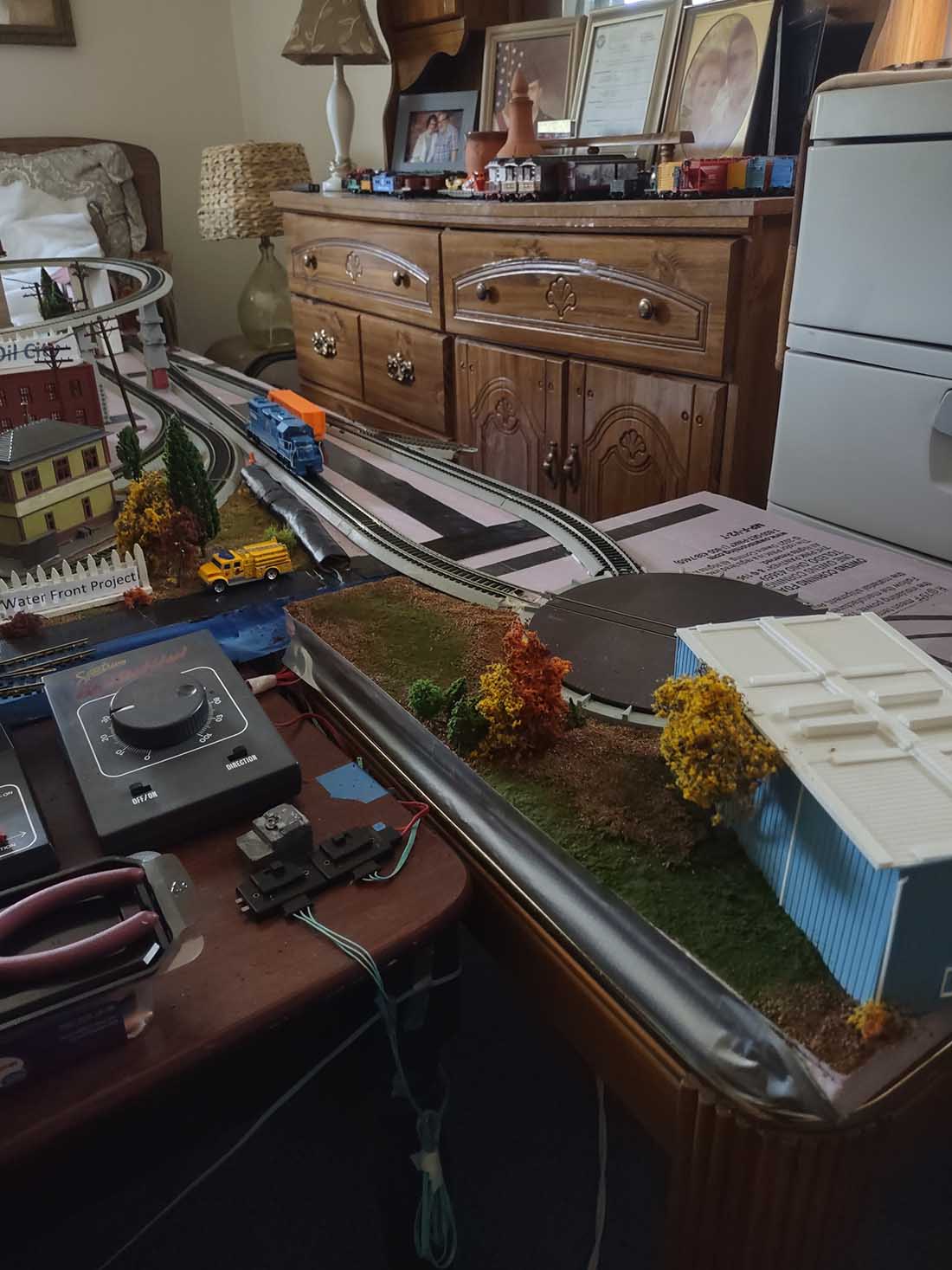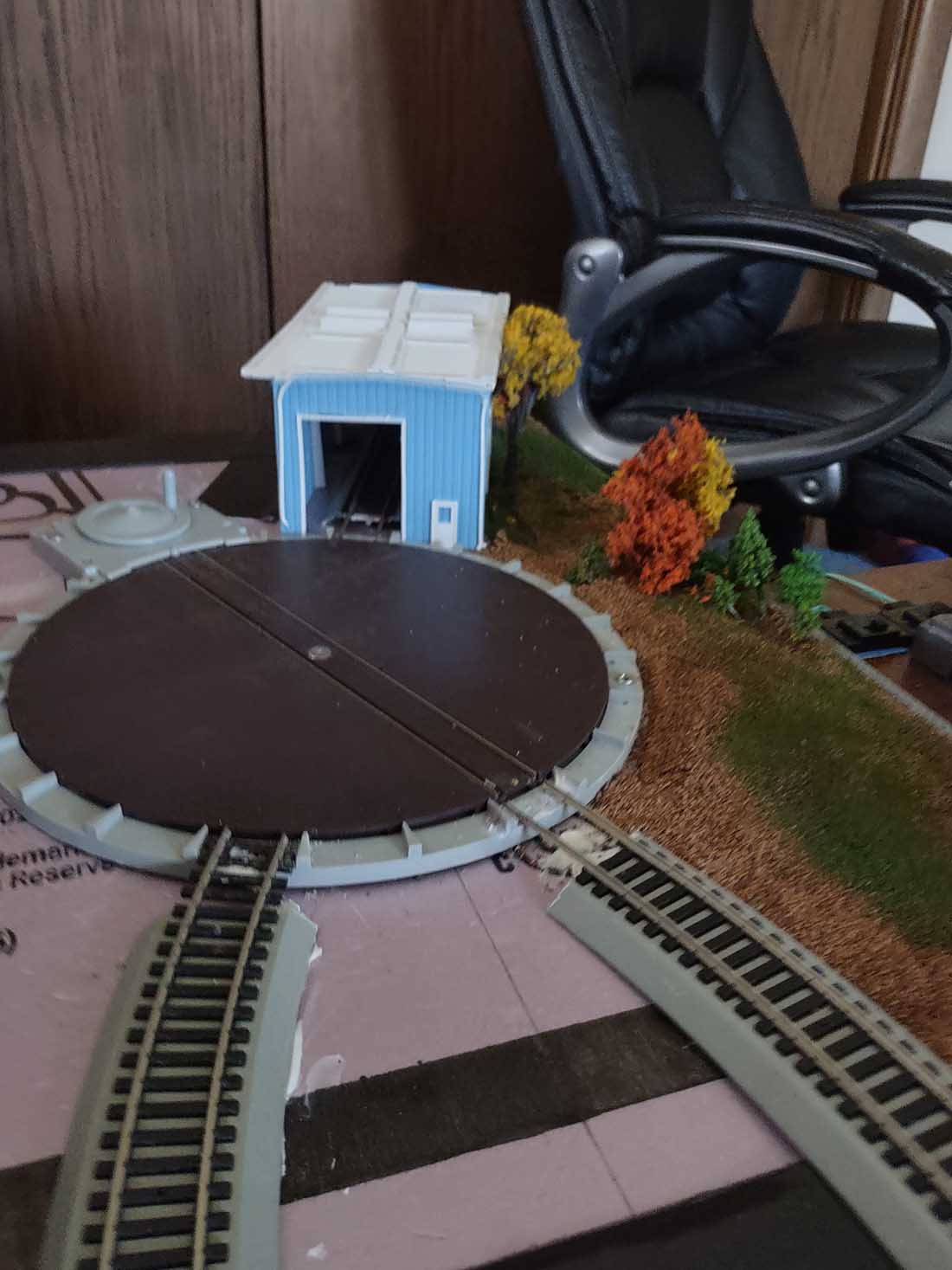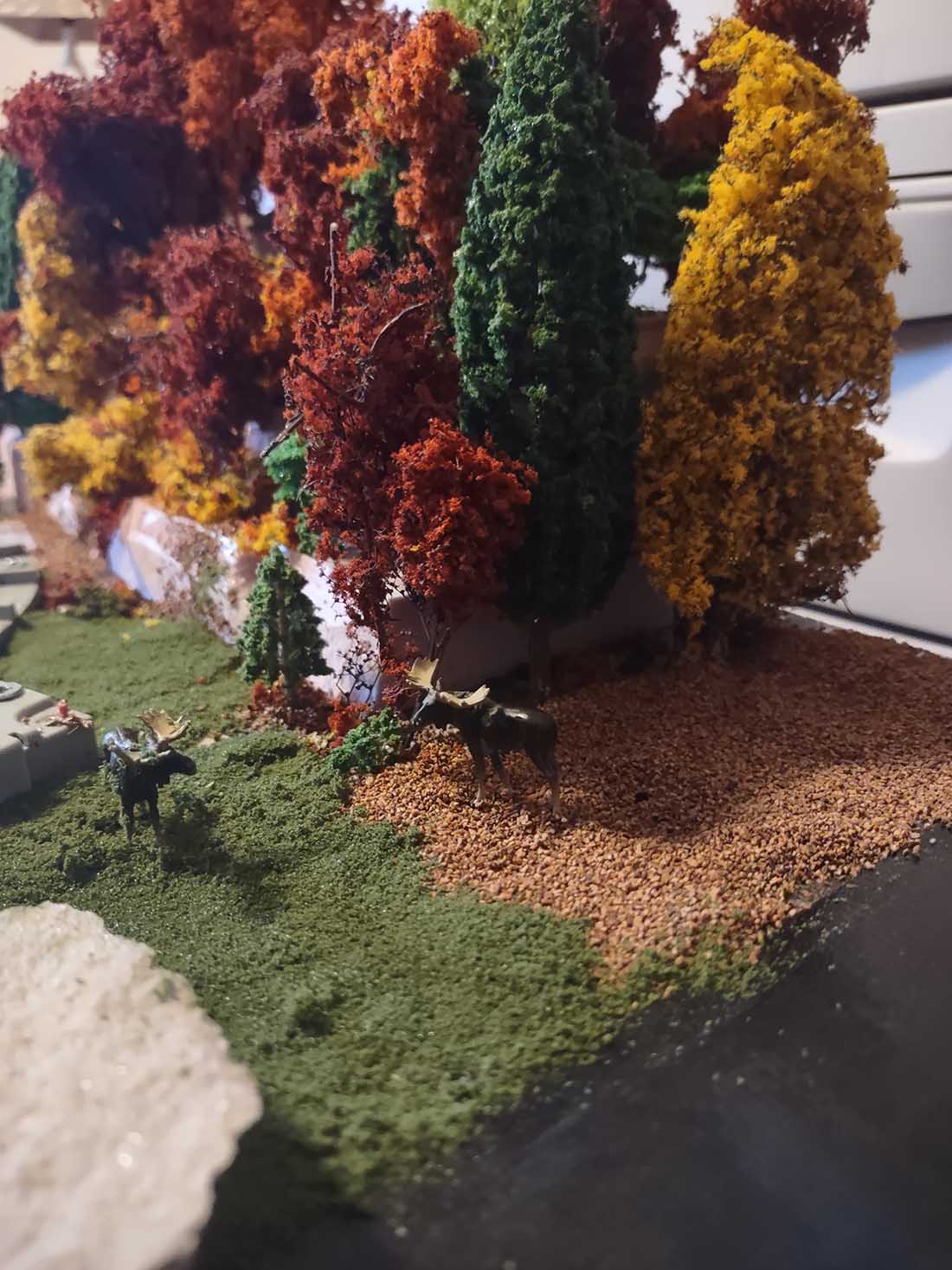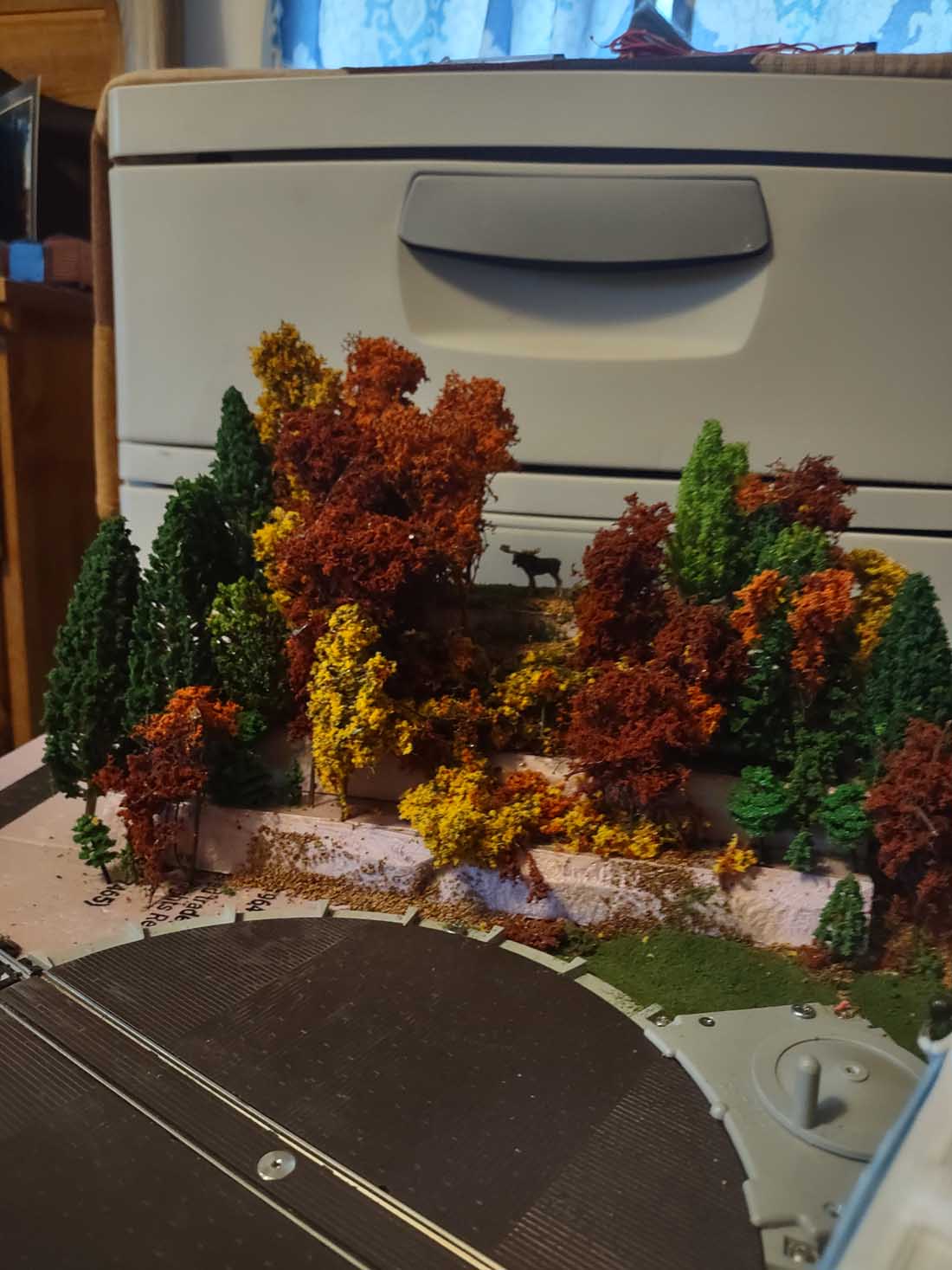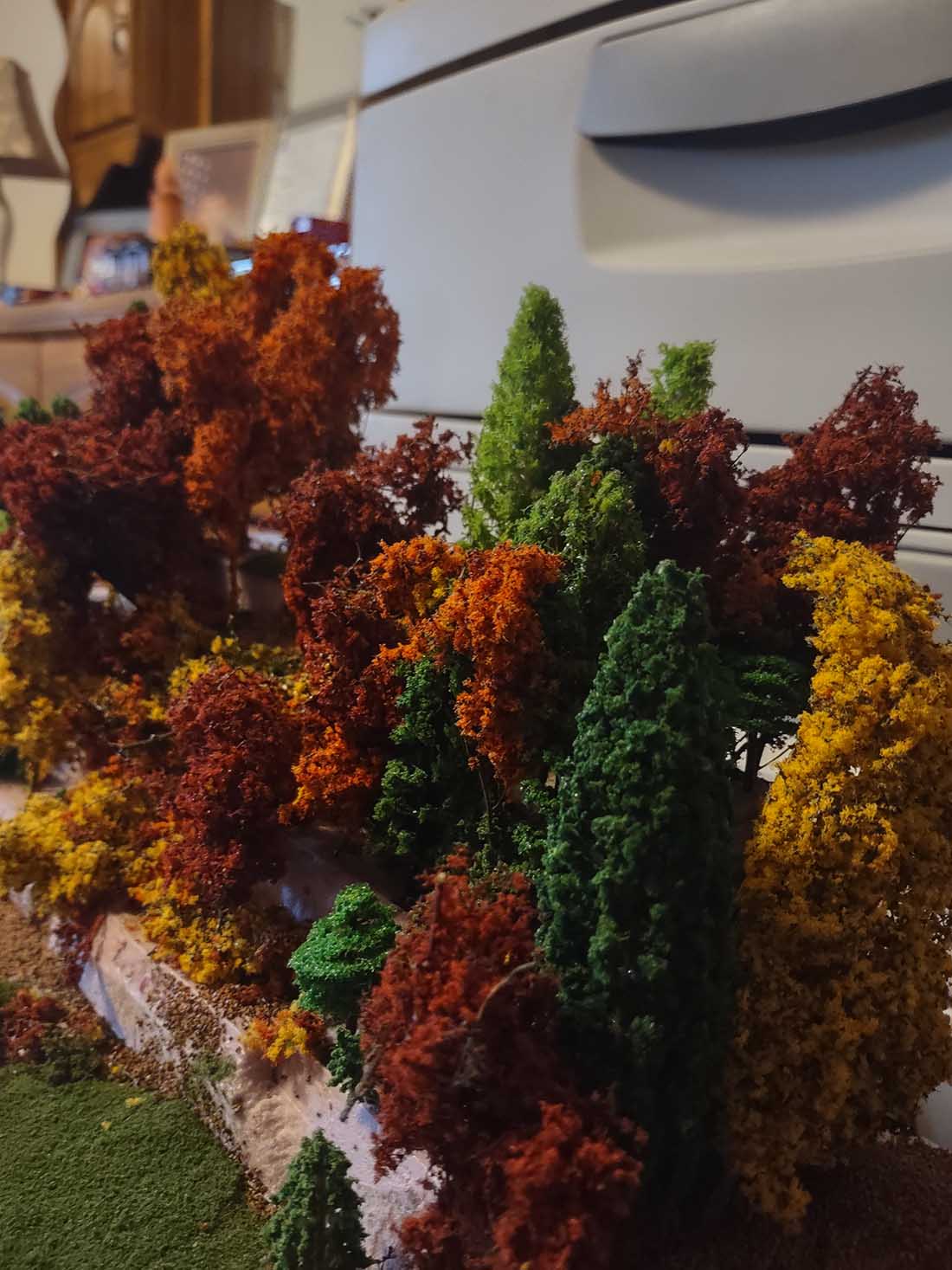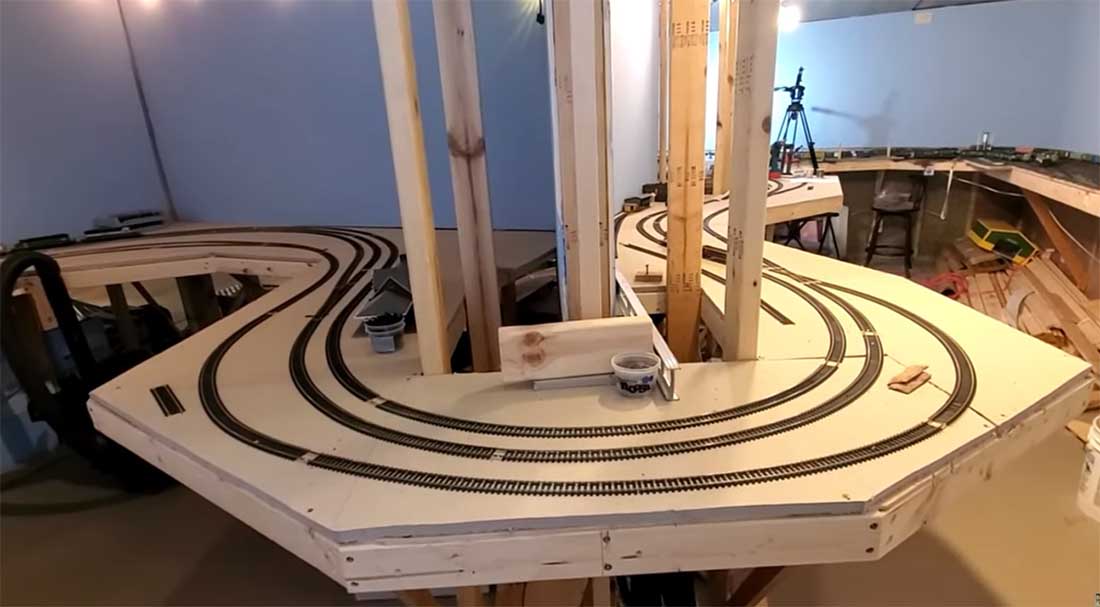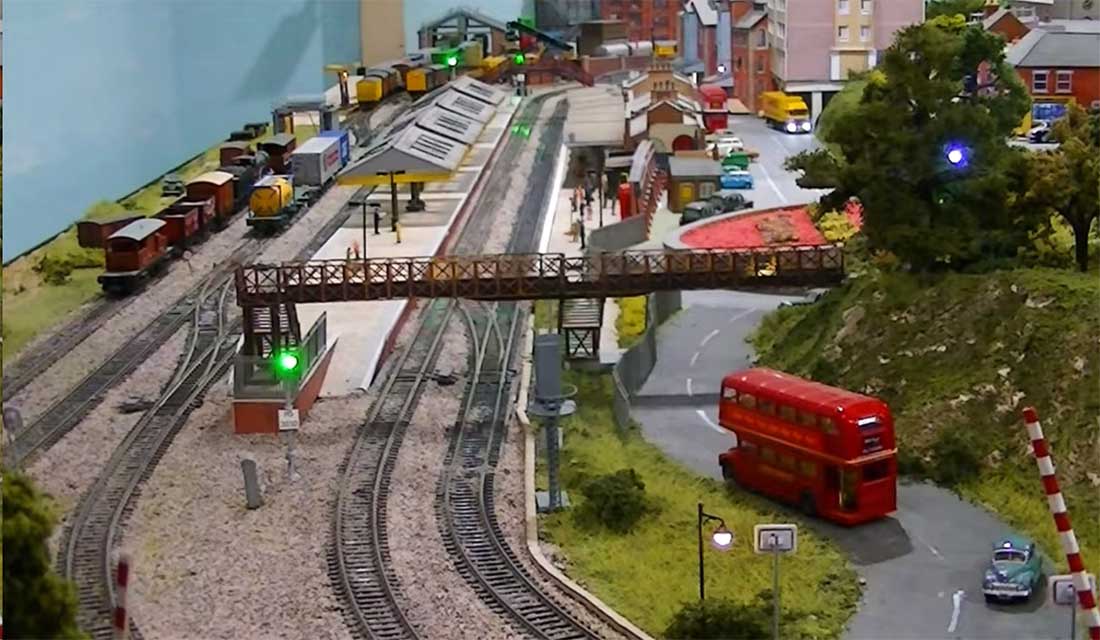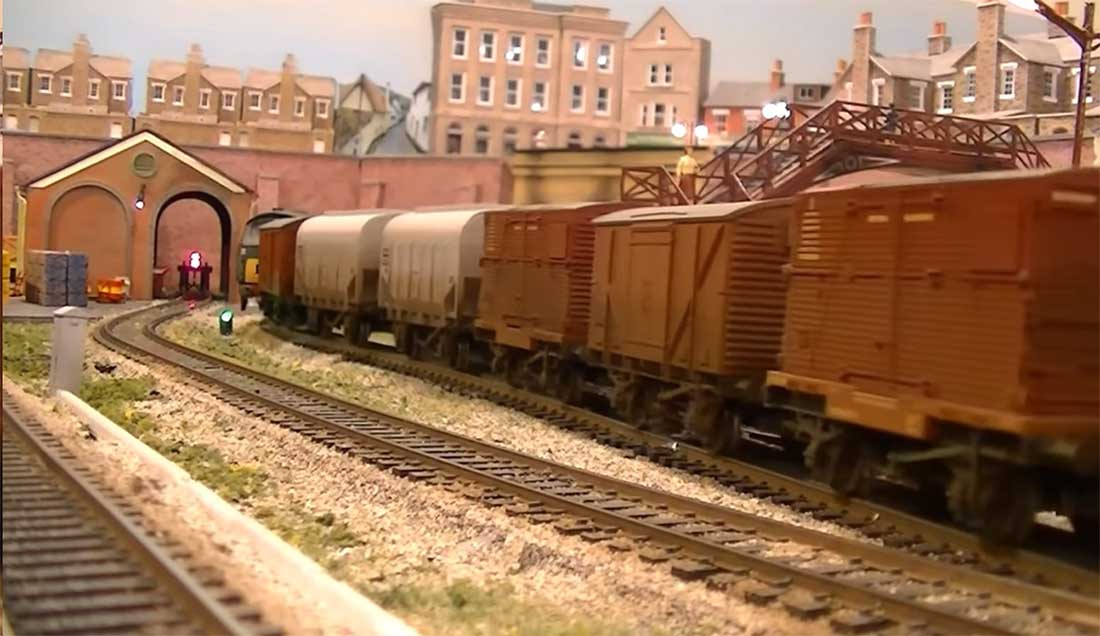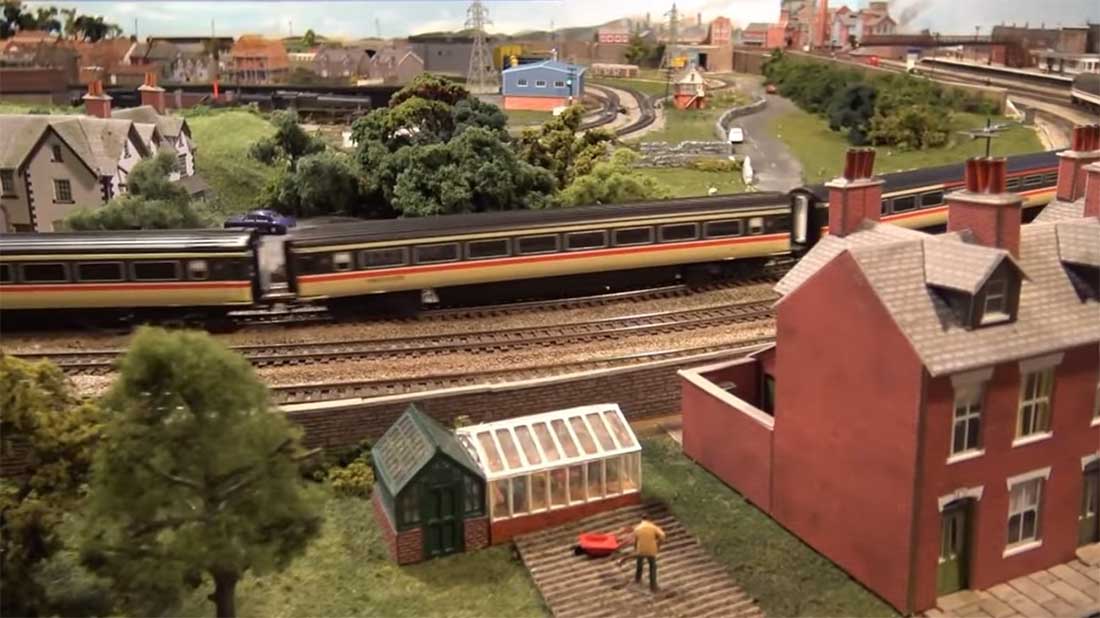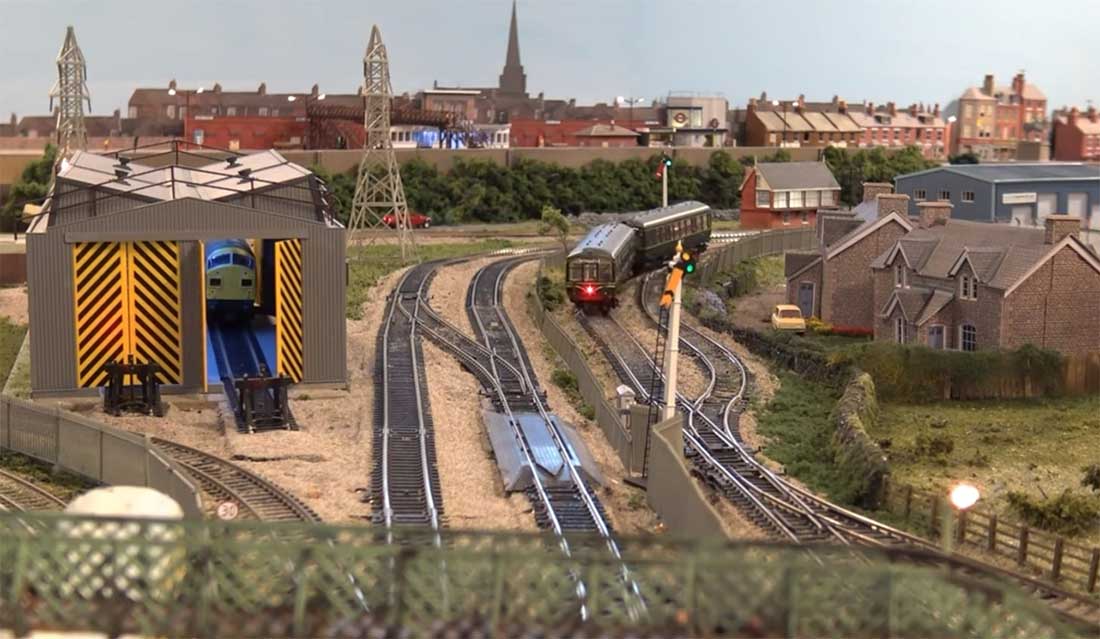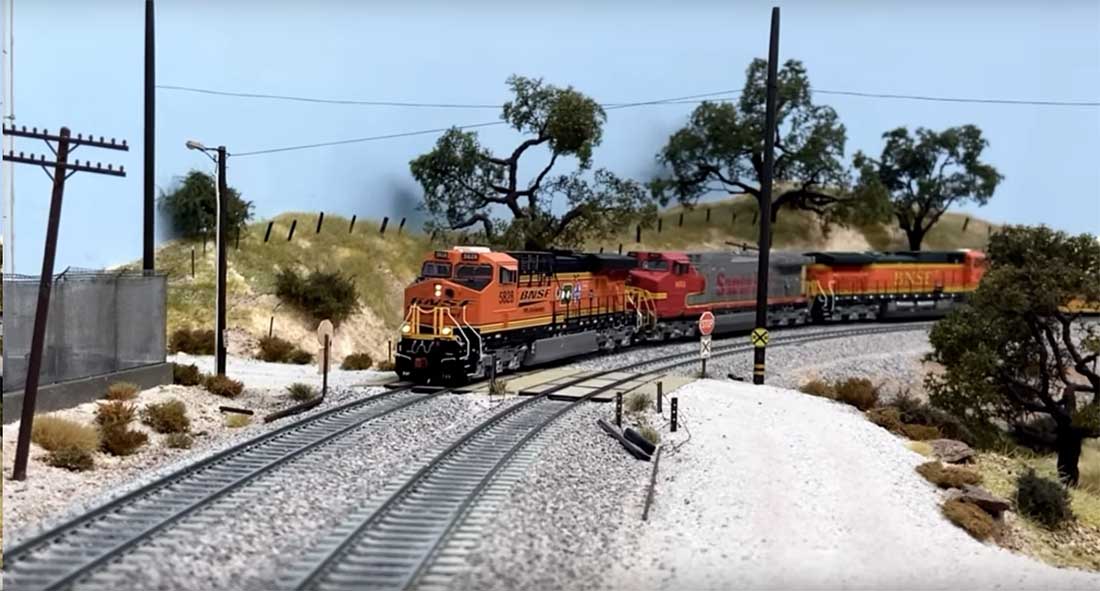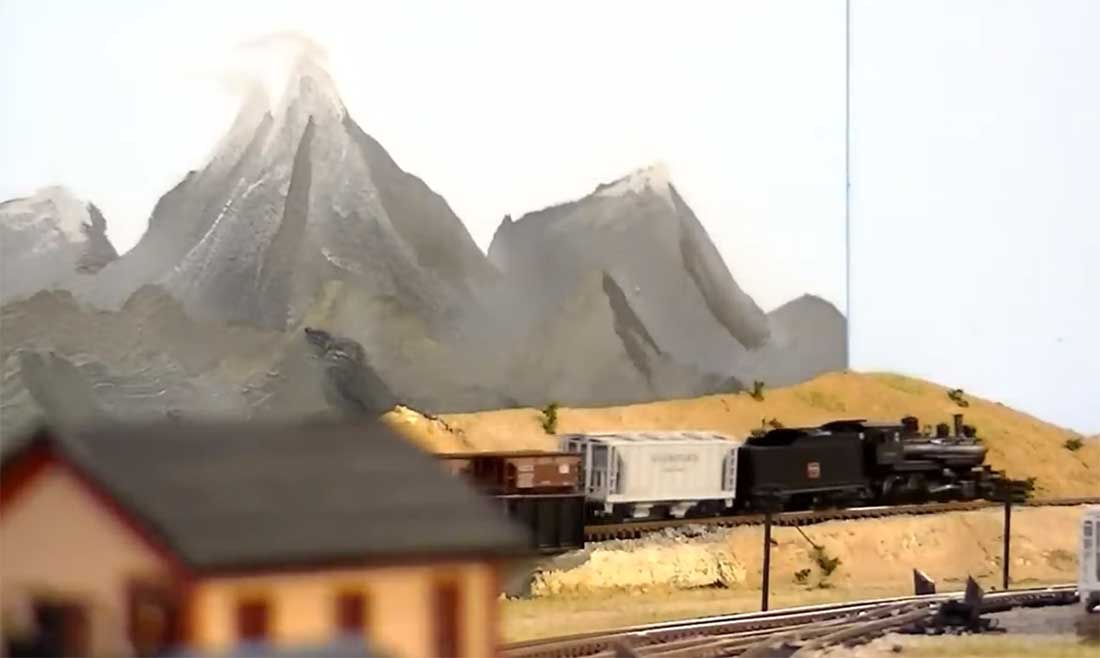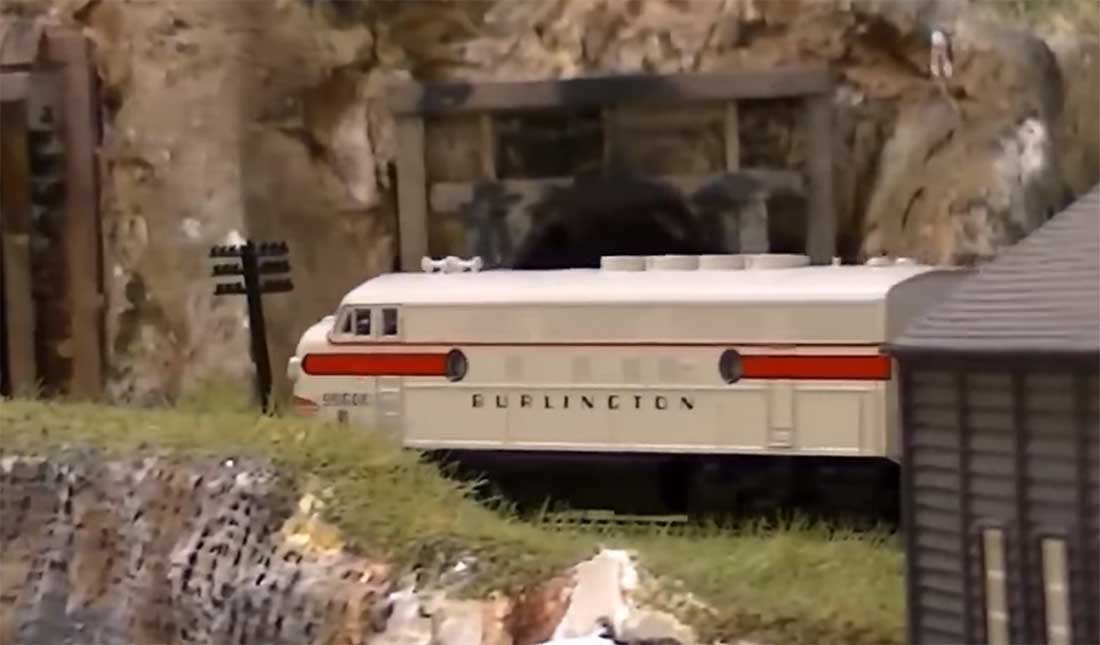Dan’s been back in touch with more HO scale background scenery tips:
“I began working on a model railroad for a friend in 2014. It was one of three I was working on at the time.
The layout was to be two levels with storage tracks and a run-through mainline. The lower level was to be sceniced as well as the top level.
The national NMRA convention was going to be in Indianapolis in 2016. By late-2014 or so we knew I could not get the “top” level ready by the convention. The lower-level track and wiring was in place by then.The footprint of the layout was done. None of the scenery had begun at that time.
It was decided that he would hire a company to design and put in the basic track. No scenery or wiring was done by them. I took them to my house to see how I did my scenery work. They were unimpressed with my work. They especially did not like the ceiling tile rocks.
This will be a series showing the progress of the layout and how the scenery progressed.
Take a close look at the upper-level track plan and see how difficult some of the scenery projects turned out to be. It was a challenge because they never asked how we wanted the scenery to look when finished.
The double tracked mainline was at different levels. At one point, one crossed under the other. Also, there turned out to be a place where the scenery could be seen from both sides. We elected to have a duck under rather than a lift out to get from one side to the other.
This layout was fun to do, and I got to try some new scenery techniques I hadn’t tried before.
The owner wound up wanting to add a town later. So, it became 2021 and a town appeared. I will show you that later.
I hope you will like the Unnamed Railroad. So named because he runs all kinds of railroad locomotives, and he never came up with a name.
This is the upper or top level if the track plan the company did.
The part in this installment showing half of the layout with the dimensions of this portion.
The helix. It is single track. The track on the gypper level is not part of the helix.
The approach to the helix on the lower track and the upper level trackage. Look closely and note that the company chose to make the double track mainline become different levels.
HO scale background scenery:
The two bridges show the separation of the two mainline tracks more clearly. This separation will make the scenery a very challenging project. (This will be in the next post.)
Well along in the basic construction. The part that will be viable has the ceiling tile rocks in place. The super structure of the mountain has begun.. A requirement of the owner was, he had to be able to stand up inside the mountain for ease of maintenance.
The other side. The tunnel portal is for the helix. I used cardboard strips woven together and glued with a glue gun to hole the shape.
There is a coal mine as part of the helix area.
The cardboard strips have been covered with plaster cloth. I use just one sheet with the next sheet overlapping about an inch. This has always been enough for me.
The first application of sculpta mold. The sculpta mold is repainted a “dirt” color. If a spot happens to be missed, when applying the ground cover the spot is “dirt.” You will notice that the far side is already finished.
Progress.
The sculpta mold is done. Notice the circled section. This shows where some earth has eroded down and filled this spot. Details often overlooked.
Overall look.
Finished look of this side.
Hikers on the hill side.
Before the trees were “planted.”
One of the “problems” caused by the company separating the mainlines. It required separate tunnel portals. I found a prototype situation like this in Virginia.
The coal mine in place.
The fire tower. This is an N scale structure to suggest height and distance. You can get a glimpse of the Other side of the mountain.
I use the scenery application as I have described in past posts. To get the ground cover to stick the hill side I covered the sculpta mold with a generous (but not thick enough to slide down the hill) amount of white glue. Then with a stiff piece of paper with ground foam on it, I gently puffed the ground foam on the glue. I VERY LIGHTLY MISTED water over the foam to soak up the glue into the foam.
Santafedan”
A huge big thanks to Hall of Fame Dan for sharing his HO scale background scenery tips. How anyone can be unimpressed with his work is beyond me. It’s a strange old world.
Here’s a few more scenery links for you, some are Dan’s, some are others:
Model railway trackside scenery.
One last word on scenery – I’m putting together a new store at the moment, so everything is in the same place. I’m going as fast as I can, but in the meantime, I’m putting some silly offers together for the printable buildings, like this:
Have a look at the Silly Discount bundle for just $29.
That’s all for today folks.
Please do keep ’em coming.
And if today is the day you get started on your layout, the Beginner’s Guide is here.
Best
Al
PS Latest ebay cheat sheet is here.
PPS More HO scale train layouts here if that’s your thing.
